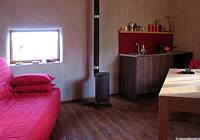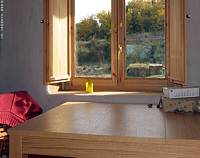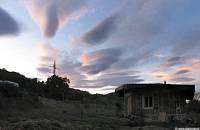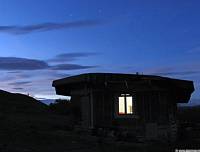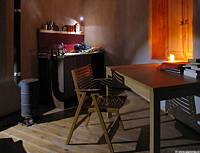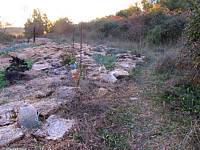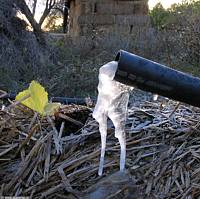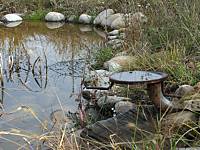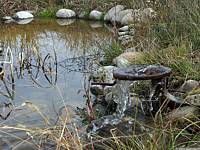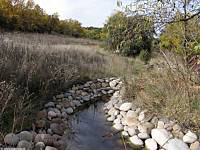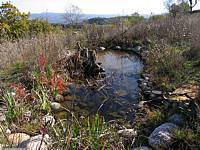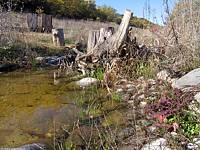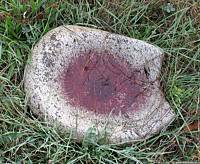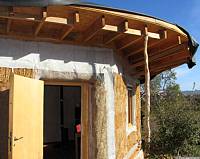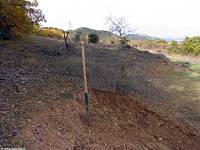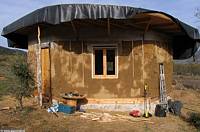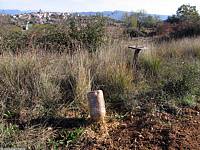|
|
Nature
Switched On
|
|
|
introduction |
2009 November 6 to 17 Having lived and slept for some
weeks in the garden house, we can happily say now that conditions
inside are quite comfortable. While outside temperature varied
between sub-zero temperatures in the morning and about 16º C at
midday, inside the temperature didn't get below 14º. When you step
inside from the cold you have the feeling of a heating |
Interior, with the recently installed kitchen unit.
|
|
The biggest window, opening to
the south. 17 Nov 14:29 |
||
|
UFO-like lenticular clouds, originated by the Pyrenean mountain
range. 11 Nov 17:45 |
Ursa mayor in the
north-western sky. 11 Nov 18:32 |
|
|
Interior at night. |
We installed a small kitchen unit and connected the running water.
The outflow goes via a 1-inch-tube to the nearest straw-filled basin
of a fruit tree. A limitation of this extremely simple and effective
waste water treatment (advocated by Art Ludwig) became clear one
cold morning with temperatures 5º below zero. The tube is supposed
to be carried from tree to tree and cannot be buried and then it
gets exposed to frost with the accompanying obstruction of the tube.
The tube can stand the extra pressure but for the first hours in the
morning the outflow doesn't work.
|
|
Frozen water outlet in the straw-filled basin of an apple tree. 10 Nov 8:42 |
Typical example of the chilling
effect of a straw layer on the air temperature immediately above it. 6 Nov 7:55 |
|
|
The running water reaches now also the two ponds and for the moment I prefer to maintain the water at a decent level with this clear water instead of the collecting of the rain water from the different higher terraces. This running-off water is very unpredictable and usually quite laden with earth, dirtying the pond. It takes the ponds weeks or months to turn transparent again. The public water may be somewhat more richer in nutrients, with the risk of an outburst of algae growth, but so far the water stays clear.
|
||
| Some
scrap metal used to soften the inflow of running water. 13 Nov 14:08 |
With an almost closed tap, the
stream is reduced to a nice trickling. 13 Nov 14:07 |
|
|
|
The water in the lower pond took
months to become transparent. Looking north-west. 17 Nov 11:50
Upper pond. |
|
|
|
||
|
Watering stone for birds with a strange red sediment. 12 Nov 9:02 |
||
|
Another job I decided
to do over again, was the extra support for the roof. In order to
stabilize the irregular roof I
had used an oak trunk
under a series of rafters. But when the temporal black hanging EPDM
sheet is turned aside, you discover a rather ugly structure, like a
horrible set of teeth showing up when a mouth opens. So the
whole struct |
||
|
The newly installed supporting
board is hidden under the white vertical cloth, embedded in the
weakest position of the straw bale wall. 16 Nov 10:55 |
||
|
Clay pit on the higher central terrace. |
|
|
|
Partly dried plaster on the
south wall. 17 Nov 11:29 |
||
|
|
Water tap wrapped up in
straw inside a plastic bottle. |
|
|
introduction
|
|
